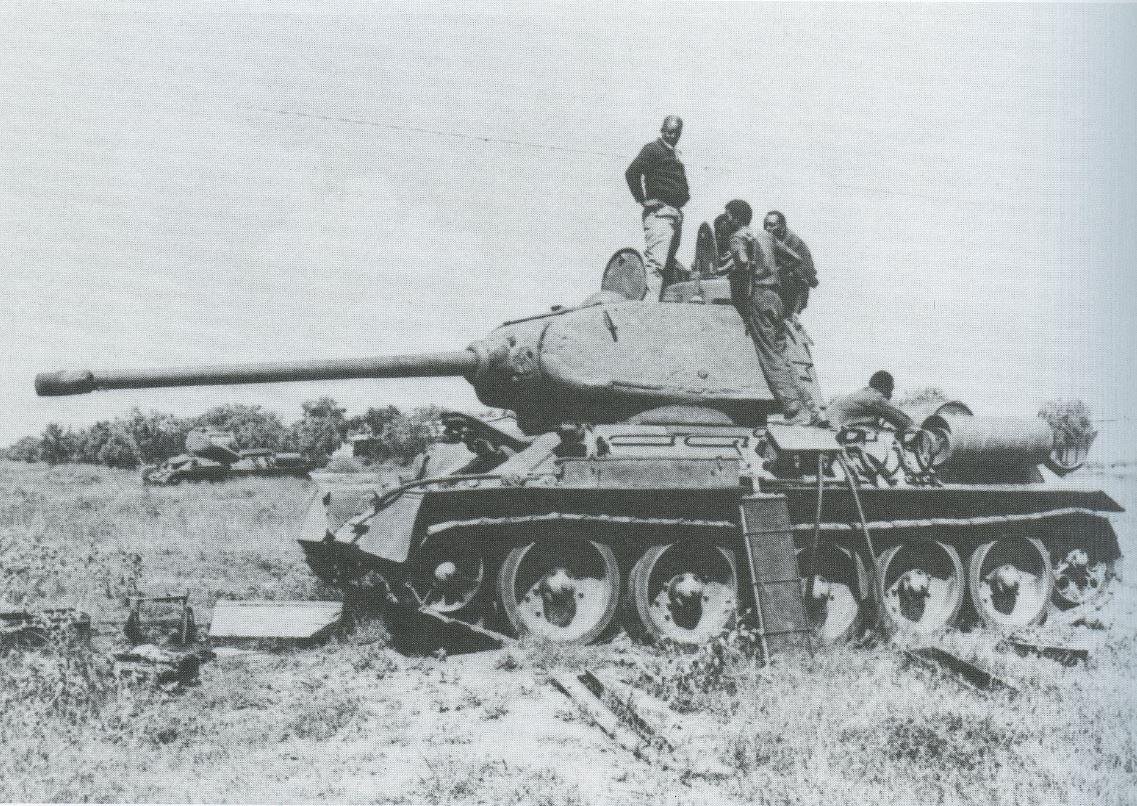"The Ethiopian Revolution and the struggle against U.S. imperialism" is a small book published by the Workers World Party (WWP), a left-wing radical group in the United States. The party has Trotskyist origins, but its real politics sound like a curious blend of pro-Soviet Communism and Maoism, making the WWP "Stalinist" rather than properly Trotskyist. It's notorious for strongly supporting the Soviet invasions of Hungary and Czechoslovakia. Judging by this and other WWP material, the group also strongly backed the Derg of Ethiopia, a Soviet-backed military regime claiming to be socialist and revolutionary. The Derg's chairman was Mengistu Haile Mariam.
Mengistu's rule was challenged from pretty much every quarter: moderates within
the armed forces, various ethnic guerrilla groups, armed supporters of the old
feudal regime, hostile neighbours and (surprise) the United States. The
conflict within Ethiopia was further complicated by conflicts between rival
left-wing organizations. In this book, the WWP actually admits that much of the
"counter-revolutionary" violence was perpetrated by the EPRP, a
leftist group whose formal program was almost identical to that of the Derg!
They also admit that the Eritrean EPLF was left-wing. When Ethiopia was ruled
by the pro-Western feudal emperor Haile Selassie, most leftists had supported
the EPLF. After the Ethiopian revolution, things got more complex, as the Derg
and the EPLF drifted further apart, the Derg refusing to grant Eritrea
independence, the EPLF siding with conservative groups and pro-Western Arab
regimes. According to this little book, the Palestinian DFLP actually made some
kind of attempt to mediate between the two contending parties, apparently
unsuccessfully. In the end, the WWP and most Soviet-oriented leftists sided
with the Derg, while the Maoists and Hoxhaites sided with the EPLF and other
ethnic/leftist guerrillas fighting Mengistu's increasingly more brutal regime.
However, Eritrea plays only a minor role in "The Ethiopian
Revolution", which instead focuses on the Ogaden war. The United States
and various conservative Arab regimes had launched a virtual proxy war against
Mengistu's Ethiopia, the more than willing proxy being Somalia, a traditional
adversary to Ethiopia. The eastern parts of Ethiopia, including a region known
as the Ogaden, has a predominantly Somali population. The Somali regime of Siad
Barre, which had originally been pro-Soviet, made a dramatic turn after the
Ethiopian revolution, instead siding with the Western powers in return for
military and financial assistance. Somalia then attacked Ethiopia, overrunning
the ethnically Somali provinces, and threatening important non-Somali towns.
With the aid of the Soviet bloc (including Cuban troops), the Derg eventually
managed to repulse the invasion and retake all of Ogaden. For some reason, the
WWP's book doesn't mention the presence of Cuban troops in Ethiopia, although
it does admit that there were Soviet and Cuban "advisors". Instead,
most of the book is devoted to exposing the Western propaganda concerning the
Ogaden War: U.S. president Jimmy Carter's feigned neutrality, Somali denials
that any invasion had taken place at all (!), and the machinations of various
Arab regimes, most notably that of Sudan, at the time a U.S. ally in the
region. Siad Barre's flip flops are also meticulously detailed.
"The Ethiopian Revolution" consists of articles published in the
Workers World newspaper from August 1977 to January 1978. It also contains the
Program of the National Democratic Revolution, adopted by the Derg in 1976.
Many of the photos in the book are original, taken by Workers World reporter
Deirdre Griswold during her trip to Ethiopia. Although this little book is (of
course) a propaganda tract on behalf of the Derg, it nevertheless struck me as
relatively interesting, and I therefore give it three stars. Of course, I heard
quite different versions of events from Ethiopian and Eritrean refugees living
in Europe...

No comments:
Post a Comment